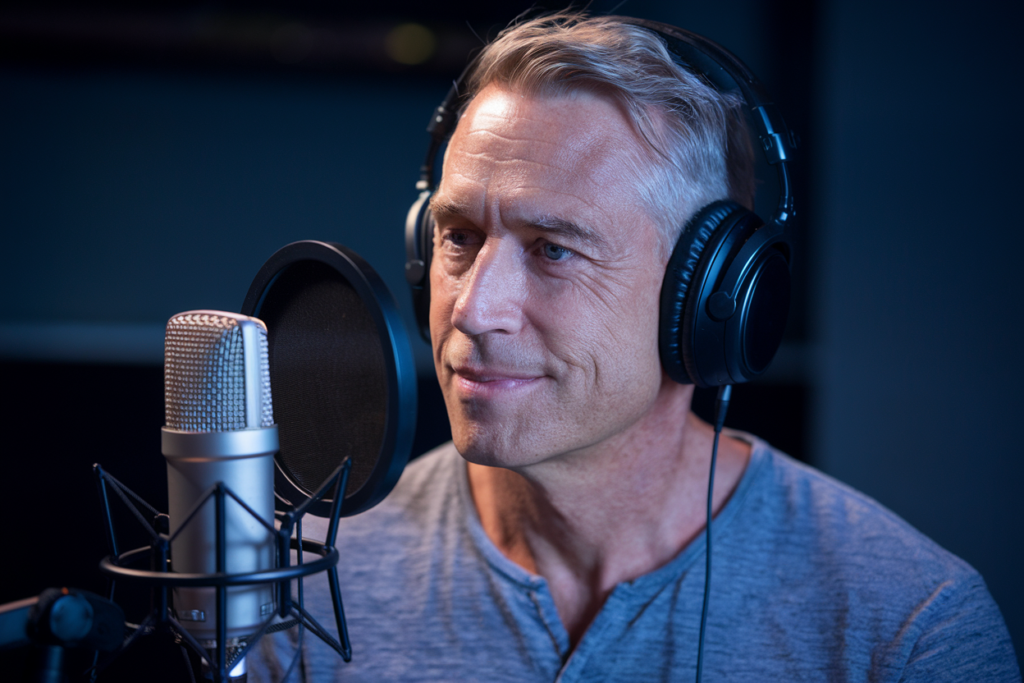From the bustling streets of New York City to the sun-soaked shores of California, American film and TV capture the rich tapestry of dialects that define our culture. These unique ways of speaking not only add authenticity to characters but also serve as a mirror reflecting regional identities and social dynamics.
As you watch your favorite shows or movies, consider how dialogue shapes your understanding of different communities. It’s fascinating how filmmakers use accents, slang, and speech patterns to create relatable narratives while showcasing America’s diverse linguistic landscape. Dive into this exploration of how film and TV bring USA dialects to life, revealing deeper connections between language and identity.
Key Takeaways
- Cultural Reflection: Film and TV mirror the diverse dialects of the USA, showcasing regional identities and social dynamics through authentic dialogue.
- Character Authenticity: Distinct speech patterns and accents enhance character development, allowing viewers to connect with narratives on a deeper level.
- Voiceover Techniques: Skilled voice actors play a crucial role in accurately representing dialects, bringing characters to life and enriching storytelling.
- Impact on Audience Perception: The portrayal of dialects influences how audiences perceive different communities, challenging stereotypes while fostering understanding.
- Diversity in Casting: Inclusive casting choices highlight the richness of American culture by showcasing various voices through authentic performances.
- Significance in Storytelling: Dialect serves as a powerful storytelling tool that enhances authenticity and emotional connection between characters and viewers.
Overview of USA Dialects in Film and TV
USA dialects play a crucial role in film and television, providing authenticity and depth to characters. Various regions feature distinct speech patterns, accents, and slang that reflect local culture. These elements enhance storytelling by grounding narratives in recognizable social contexts.
Filmmakers often employ voiceover techniques to emphasize regional traits. Voice actors adapt their performances to match dialects, bringing characters to life with genuine sound. This attention to linguistic detail helps audiences connect with the storyline on a deeper level.
Diverse accents also serve as tools for character development. A southern drawl may signify warmth or hospitality, while a New York accent might convey toughness or urbanity. These verbal cues shape viewers’ perceptions of individuals within different communities.
Additionally, dialect representation fosters inclusivity. By showcasing various voices through diverse casting choices, productions highlight the richness of American culture. Using skilled voice talent captures the nuances of these dialects effectively, giving each character a unique identity that resonates with audiences.
Understanding how USA dialects influence film and TV can enrich your appreciation for storytelling methods used in media today. Recognizing the impact of voiceovers and specific regional expressions enhances your viewing experience while illustrating the intricate relationship between language and cultural identity.
Historical Context
American film and television reflect the evolution of dialects, showcasing how regional accents capture cultural nuances. The portrayal of these dialects in media provides insight into societal changes over time.
Evolution of American Dialects
American dialects emerged from a blend of languages and cultures, influenced by immigration patterns and geographical factors. Early settlers brought their speech characteristics, which evolved into distinct regional accents. The Great Migration significantly shaped urban dialects, as African American communities developed unique speech patterns that gained prominence in film and television. These portrayals not only highlight linguistic diversity but also contribute to character authenticity through voiceovers that convey specific cultural backgrounds.
Influence of Media on Dialect Perception
Media plays a crucial role in shaping perceptions of dialects across the United States. Television shows and films often reinforce stereotypes or challenge them through nuanced dialogue. Voice actors utilize their skills to bring characters to life while ensuring genuine representation of various accents. As audiences engage with these productions, their understanding of different communities expands, fostering greater appreciation for linguistic variety. This connection between media representation and public perception emphasizes the importance of authentic voiceover performances in portraying America’s rich tapestry of dialects.
Representation of Dialects in Film
American film and television prominently showcase the nation’s diverse dialects, enhancing storytelling through authentic dialogue. The use of regional accents not only brings characters to life but also reflects cultural identities and social dynamics.
Iconic Movies and Their Dialect Choices
Iconic movies often feature distinct dialect choices that resonate with audiences. For example, films set in New York City frequently employ a strong New York accent, while Southern dramas capture the charm of Southern drawls. These deliberate choices create relatable narratives, allowing viewers to connect with characters on a deeper level.
Moreover, voice actors play an essential role in bringing these dialects to life. Skilled voice talent can adopt various accents seamlessly, ensuring that representations are both accurate and engaging. This attention to detail enhances character authenticity, making stories more immersive for audiences.
Impact on Audience Perception
The portrayal of dialects significantly impacts audience perception regarding different communities. Authentic dialogue using varied accents challenges stereotypes and fosters understanding among viewers. When filmmakers prioritize genuine representation through careful casting and skilled voice performances, they contribute to a richer viewing experience.
Voiceover work complements this by allowing for nuanced character development that might otherwise be lost without proper representation. By employing talented voice artists who can convey local speech patterns effectively, filmmakers enhance their narratives while broadening audience appreciation for linguistic diversity.
These elements underline the importance of accurately portraying American dialects in film and TV as it cultivates empathy toward different cultures within society.
Representation of Dialects in TV
TV shows often showcase a rich tapestry of dialects, providing viewers with insights into regional identities. Through authentic dialogue, these productions reflect the diverse cultural landscape of the United States.
Popular TV Shows and Dialect Diversity
Shows like The Wire and Friday Night Lights highlight specific regional accents, enhancing narrative authenticity. The use of local dialects helps create relatable characters that resonate with audiences. For example, the distinct Baltimore accent in The Wire adds depth to character development and emphasizes cultural backgrounds. Similarly, Southern dramas utilize drawls that convey warmth and tradition, helping to establish a sense of place.
Diverse casting choices play a crucial role in presenting various dialects effectively. Voice actors skilled in regional speech patterns contribute significantly by infusing their performances with genuine nuances reflective of their characters’ environments.
Stereotypes vs. Authenticity
Media representation can either reinforce stereotypes or promote authenticity through careful portrayal of dialects. While some shows may lean into caricatures for comedic effect, others prioritize genuine representations that enrich storytelling.
Authentic voiceovers enhance character relatability by accurately capturing local speech traits. Skilled voice artists ensure that portrayals remain respectful and nuanced rather than simplistic or exaggerated. This commitment to authenticity fosters understanding among viewers while challenging preconceived notions about different communities.
By prioritizing accurate dialogue delivery through talented voice actors, TV productions can successfully bridge cultural gaps and foster appreciation for linguistic diversity within American society.
The Significance of Dialect in Storytelling
Dialect serves as a powerful tool in storytelling, enhancing the authenticity and depth of characters. You encounter various speech patterns, accents, and slang that reflect local culture. These elements create connections between viewers and characters, allowing for more relatable narratives.
Voiceovers play a crucial role in conveying dialects effectively. Skilled voice actors adapt their performances to capture regional traits, providing nuanced delivery that enriches storytelling. Authentic voiceover talent can evoke strong emotions and help audiences resonate with characters on a deeper level.
Diverse accents contribute significantly to character development. By using distinct dialects, filmmakers influence your perceptions of individuals within different communities. This representation fosters inclusivity while showcasing the richness of American culture through varied casting choices.
Moreover, understanding how dialect influences film and TV enhances appreciation for narrative techniques. Iconic films utilize specific dialect choices to engage audiences; a New York accent might establish an urban setting, while Southern drawls convey charm and warmth in dramas. These deliberate decisions help challenge stereotypes and promote understanding among viewers.
Television series also benefit from authentic portrayals of dialects. Shows like The Wire or Friday Night Lights utilize local speech patterns to enhance narrative credibility. The use of skilled voice actors infuses performances with genuine nuances that bring regional identities to life.
The significance of dialect in storytelling lies in its ability to provide authenticity, foster empathy, and create immersive experiences for viewers through effective voiceovers and dedicated voice talent.
Conclusion
Understanding how film and TV reflect America’s diverse dialects deepens your appreciation for storytelling. The intricate connection between language and identity shapes character authenticity and influences audience perceptions.
As you explore different shows and movies, notice how accents and speech patterns enhance narratives while fostering empathy toward various cultures. This representation is vital in challenging stereotypes and promoting inclusivity.
By embracing the richness of American dialects, filmmakers create relatable characters who resonate with viewers from all walks of life. So next time you watch your favorite series or film, pay attention to the dialogue—it reveals much more than just words; it tells a story about culture, community, and identity.
Frequently Asked Questions
How do dialects influence character portrayal in American film and television?
Dialect plays a crucial role in shaping character authenticity. Filmmakers use specific speech patterns, slang, and accents to reflect regional cultures and identities. This not only enhances relatability but also influences viewers’ perceptions of characters, fostering deeper connections with the narrative.
Why is dialogue important in storytelling?
Dialogue is essential as it conveys emotions, cultural nuances, and character traits. It shapes how audiences perceive different communities, making stories relatable and engaging. Effective dialogue can challenge stereotypes while promoting understanding through diverse language representation.
What impact do regional accents have on audience perception?
Regional accents can significantly shape audience perceptions by providing context about characters’ backgrounds. They enhance authenticity and help viewers relate more deeply to the story being told, often challenging preconceived notions about specific demographics or locations.
How have American dialects evolved over time?
American dialects emerged from a blend of languages influenced by immigration patterns and geographical factors. Historical events like the Great Migration played a significant role in shaping urban dialects, particularly within African American communities, leading to unique speech patterns that are now widely recognized.
What role do voice actors play in representing dialects authentically?
Voice actors are crucial for portraying dialects accurately as they adapt their performances to capture local nuances effectively. Their skills ensure genuine representation of various accents, which helps audiences appreciate linguistic diversity while enhancing character depth in storytelling.
Can media reinforce or challenge stereotypes regarding dialects?
Yes, media has the power to both reinforce and challenge stereotypes through its portrayal of dialects. Nuanced dialogue can promote understanding and respect for different cultures; however, reliance on caricatures may perpetuate negative stereotypes if not handled thoughtfully by filmmakers.
How do shows like The Wire utilize dialects effectively?
Shows like The Wire showcase a rich variety of dialects that enhance narrative authenticity. By incorporating local speech patterns into conversations, these productions provide insights into regional identities while allowing skilled voice actors to bring genuine emotion to their performances.
Why is inclusivity important in casting choices related to dialect representation?
Inclusivity in casting ensures that diverse voices accurately represent various cultures within film and television. This approach fosters empathy among viewers while celebrating America’s rich tapestry of language and identity through authentic portrayals that resonate with broad audiences.






